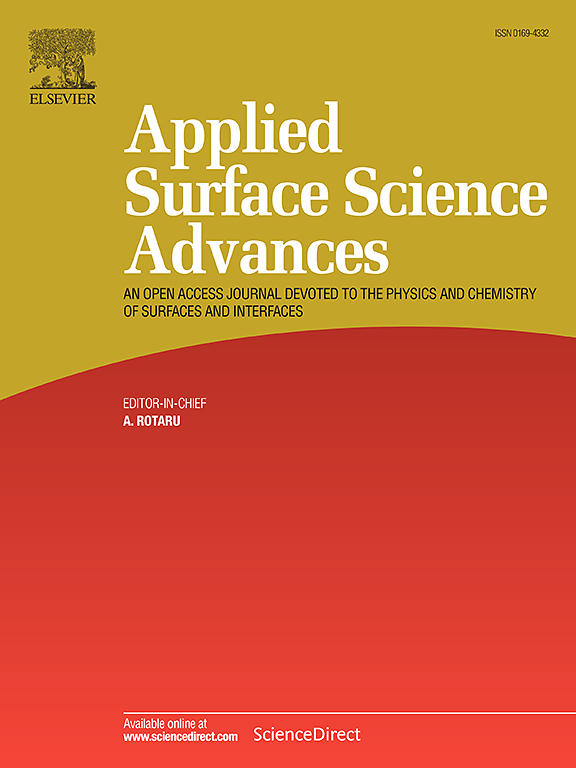Antimicrobial activity enhancement of MgO nanoparticles through Zn doping against multidrug-resistant bacteria
IF 8.7
Q1 CHEMISTRY, PHYSICAL
引用次数: 0
Abstract
The structural, morphological, and antibacterial effects resulted from incorporating zinc into magnesium oxide (MgO) host lattice. Two samples were synthesized via the precipitation method with 10 and 16% zinc concentrations, and their properties were compared with those of a commercial (MgOc) sample. Structural analyses confirmed a cubic structure with space group Fm-3 m, which underwent distortions as Zn concentration increased. Microstructural studies via X-ray diffraction and transmission electron microscopy revealed nanoparticle (NPs) formation with a polyhedral morphology resulting from surface hydroxylation of cubic-shaped particles. Zinc incorporation and the presence of defects centers such as oxygen vacancies creates electronic states inside the bandgap reducing the bandgap energy value from 5.7 eV to 4.7 eV. Furthermore, an increase in Urbach energy was observed, suggesting greater energetic disorder due to the introduction of localized electronic levels within the bandgap. Zinc incorporation also increasing the average particle size. Antibacterial activity was evaluated based on IC50. For Staphylococcus aureus ATCC, IC50 values were 0.8 mg/mL and 0.49 mg/mL for commercial MgO NPs (MgOc) and MgO-Zn 10, respectively. In the case of S. aureus, multidrug-resistant (MDR) needed 2.81 mg/mL MgOc NPs, whereas IC50 was reduced to 0.69 mg/mL for MgO-Zn 10. For Pseudomonas aeruginosa ATCC, IC50 of MgOc NPs was 0.77 mg/mL, whereas a decrease of 0.34 mg/mL was observed for MgO-Zn 10. Concerning P. aeruginosa MDR, IC50 of MgOc NPs was 0.710 mg/mL, whereas a value lower than 0.5 mg/mL was recorded for MgO-Zn 10. These results suggest that using MgO‒Zn nanoparticles represents a promising strategy for combating multidrug-resistant bacteria.

锌掺杂增强氧化镁纳米颗粒对多药耐药菌的抑菌活性
将锌掺入氧化镁(MgO)主体晶格中,产生了结构、形态和抗菌效果。采用沉淀法合成了锌浓度分别为10%和16%的样品,并与工业样品(MgOc)进行了性能比较。结构分析证实其为具有空间群fm - 3m的立方结构,随着Zn浓度的增加而发生畸变。通过x射线衍射和透射电子显微镜的微观结构研究发现,纳米颗粒(NPs)的形成具有多面体形态,是由立方形状颗粒的表面羟基化引起的。锌的掺入和缺陷中心(如氧空位)的存在在带隙内产生了电子态,使带隙能量值从5.7 eV降低到4.7 eV。此外,观察到乌尔巴赫能量的增加,表明由于在带隙内引入局域电子能级而导致更大的能量紊乱。锌的掺入也增加了平均粒径。以IC50评价其抑菌活性。对金黄色葡萄球菌ATCC,商品MgO NPs (MgOc)和MgO- zn10的IC50值分别为0.8 mg/mL和0.49 mg/mL。在金黄色葡萄球菌的情况下,耐多药(MDR)需要2.81 mg/mL MgOc NPs,而mgo - zn10的IC50降至0.69 mg/mL。对于铜绿假单胞菌ATCC, MgOc NPs的IC50为0.77 mg/mL,而mgo - zn10则降低了0.34 mg/mL。对于铜绿假单胞菌耐药,MgOc NPs的IC50值为0.710 mg/mL,而mgo - zn10的IC50值低于0.5 mg/mL。这些结果表明,使用氧化镁-锌纳米颗粒是对抗多药耐药细菌的一种有前途的策略。
本文章由计算机程序翻译,如有差异,请以英文原文为准。
求助全文
约1分钟内获得全文
求助全文

 求助内容:
求助内容: 应助结果提醒方式:
应助结果提醒方式:


